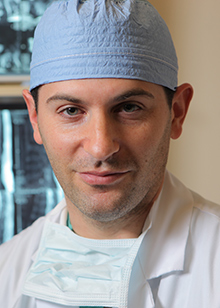
Over the past couple of years there has been an explosion of new data proving the benefits of two things: early intervention for stroke, and mechanical embolectomy using endovascular techniques. We have long known that “time is brain,” but we finally have proof that the sooner stroke patients are evaluated by a team of physicians at a Comprehensive Stroke Center the better.
Patients need to be evaluated at stroke centers instead of community hospitals because they need an INR specialist to identify the cause of the stroke (typically a clot in a major blood vessel in the brain) and address it promptly. Although the benefits of quickly removing a blood clot stuck in the brain seem self-evident, it has been only in the last two years that several clinical trials proved that patients do markedly better with this intervention. Before then, many in the medical community had dismissed the benefits of mechanical embolectomy (navigating a small catheter up to a blood vessel in the brain to remove a blockage).
Although this procedure had worked for years in heart attack patients, many felt it would not be effective in the brain. Once a clot triggered a stroke, it was thought, the damage had been done and there was little chance for recovery. We now know that select patients who receive not only timely medication to break up a clot but also an embolectomy to pull out the blockage have significantly better outcomes than those who don’t have the procedure. The finding has been the most important discovery in stroke care in decades!
With this new information, the health care system has had to revamp the way it delivers stroke care. In many ways today’s care is much improved over where it was only two years ago; awareness in both the local and medical community is the highest it’s been and hospitals are now prioritizing stroke in ways that they have not previously. In other ways, however, we still have a lot of work to do.
We need to equip first responders and local hospitals with a streamlined method of rapidly transporting patients to Comprehensive Stroke Centers, where advanced procedures such as mechanical embolectomy can be performed. Embolectomy requires a team effort from multiple providers (ER physicians, anesthesiologists, neurologists, radiologists, interventional neurosurgeons, and critical care doctors) as well as the resources of advanced nursing personnel, modern imaging equipment, and 24/7 capability to coordinate all of this care as a “well-oiled machine” — every time.
Not every medical center in the country has the ability to do this. Therefore, we need to focus our medical resources on getting stroke patients to centers with the most experience treating this complex disease. One of the most available and immediate ways to do this is through patient education. If you think someone is having a stroke, let EMS or 911 know that you want the patient “taken to the nearest comprehensive stroke center.”
Although that makes sense, it doesn’t always happen (and it’s not always even possible). It’s currently a hot topic in our field. There are laws about where an ambulance should take a patient with a stroke, and they are different in every state. Sometimes an ambulance takes a patient to the closest hospital (either by law or at the discretion of the EMTs); other times an ambulance will head to the closest Comprehensive Stroke Center. It can be a life-or-death decision, which is why some of us are hoping to have an impact on it at the legislative level.
I am actively working with the American Heart Association/American Stroke Association to change the laws in New York so that ALL stroke patients are immediately taken to endovascular-ready centers. Until government policy catches up to medical data, however, the best thing we can do is let first responders know that comprehensive stroke care is the goal — tell them you know how important it is to get the patient to the right place to receive that care, and as quickly as possible.
To help accomplish this goal, a few months ago the physicians and leadership at Weill Cornell Medicine and NewYork-Presbyterian introduced the first mobile CT ambulance in New York (and only the third one in the country). This is a doctor-staffed ambulance with cutting-edge equipment that allows brain imaging on the scene. Those images can be instantly transmitted to a Weill Cornell Medicine neuroradiologist, who can identify a clot and activate that “well-oiled machine” while the patient is still en route to the hospital. Lifesaving clot-busting medication can be given in the ambulance instead of waiting until the patient arrives.
We hope this cutting-edge technology allows more stroke patients in our community to receive expert care more quickly and safely, and that our model of bringing more timely care to the patient becomes a model for other programs around the world.